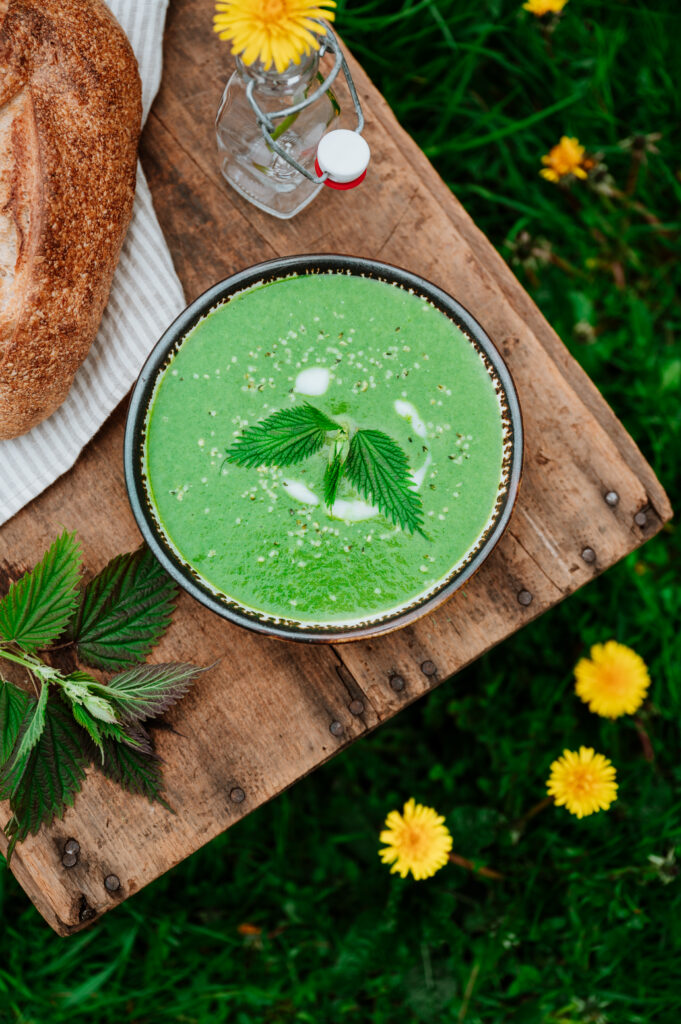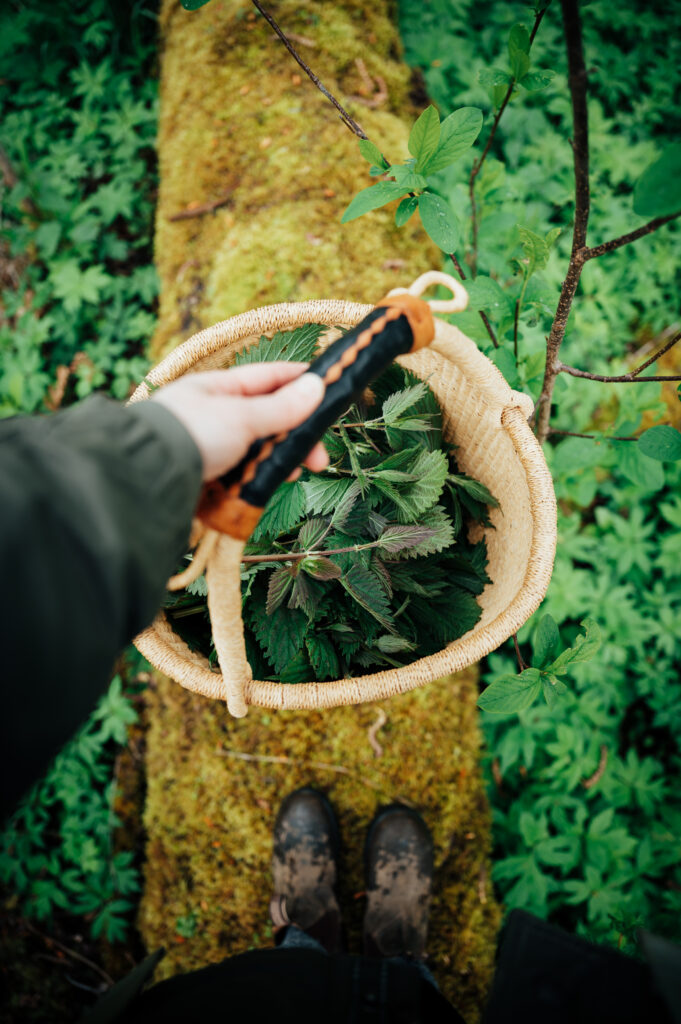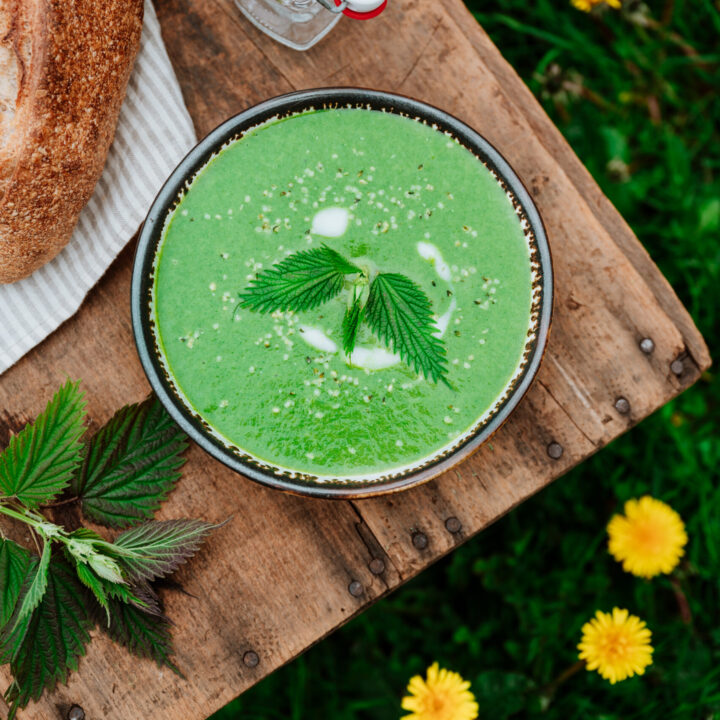Vibrant green and loaded with minerals and vitamins, this creamy nettle soup recipe is a nourishing spring delicacy! Make it with nettle tops, leeks, garlic, potatoes, miso, lemon, and fresh cream.

Stinging Nettle (Urtica dioica) has a long history of use as a wild food and for its health benefits. Nettles are one of the first plants to emerge in spring, pushing up tender shoots while the temperatures still drop below freezing at night.
Why eat nettles? They are perhaps one of the most nutrient-dense wild plants to forage and eat! They taste similar to spinach, only better. Nettle soup is a springtime classic, best made with tender young nettle tops.
This soup has incredible flavor and leaves lots of room for variations to suit your tastes. I made it with miso broth, golden potatoes, leeks, garlic, lemon, parsley, and fresh cream. The best time to harvest nettles for soup is in early spring, when the leaves and stalks are still tender. Later in the season, the leaves and stalk become tough and stringy.
Nettles are a great source of vitamins and minerals, particularly vitamins A, C, some B vitamins, and potassium, calcium, chromium, copper, magnesium, and iron! Additionally, Stinging Nettle has a long history of use for its medicinal benefits, especially in the areas of seasonal allergies, diabetes, benign prostatic hyperplasia, and as an anti-inflammatory.

Foraging for Nettles
Do you remember the first time you encountered Stinging Nettle? Their “stings” are from tiny, silicate tubes the radiate from the stem and leaves. These break off the plant on contact and penetrate the skin. This causes a painful rash that (fortunately) fades withing a few hours.
A quick remedy in the field is to crush some jewelweed leaves or plantain leaves (both weeds often found growing nearby) and rub them on the irritated skin. Otherwise, the sting will fade by itself and not harmful.
Once you are confident you have correctly identified Stinging Nettle, wear gloves to harvest the tops. Stinging Nettle is easy to identify, with its oblong-shaped leaves with serrated edges that grow on opposite sides of the stem. Pinch off the top 4-6″ portion of the nettles, using your fingers or scissors.
Harvest nettles when they are young and vibrant, but ideally before they flower. In most places, nettles will be ready to harvest in early-to-mid spring. The tips from the plant are the preferred part for eating, rather than the broader leaves from the base. Nettles will continue to grow after you harvest the tops, pushing out new leaves at the top.

Stinging Nettle Soup
A nourishing springtime soup made with fresh nettle tops along with veggies and herbs. Nettle soup is vibrant green and loaded with vitamins and minerals. Best made in early spring with young nettles.
Ingredients
- 1 basketful of fresh nettle tops
- 1/2 white onion
- 2 leeks, mostly white parts
- 2 garlic cloves
- 1/4 of a preserved lemon, or 2 teaspoons lemon juice
- 3 cups miso broth
- 2 potatoes
- Salt and pepper to taste
- 1 small bunch parsley
Instructions
- Peel and dice the potatoes. Add to a pot and cover with water. Cook until just tender, about 15-20 minutes.
- Dice the onion, leeks, and garlic. Add some oil to a pan and sauté until tender.
- Drain the potatoes. Add back into the pot. Add the miso broth and sauteed vegetables. Bring to a simmer. Add the nettles and wild for about 1 minute until just wilted.
- Remove the pot from the heat. Use a heat safe blender to puree the soup until smooth. Add the preserved lemon (or lemon juice), parsley, and salt and pepper to taste. Blend the soup until creamy.
- Pour into bowls and drizzle with some fresh cream to garnish.
Notes
Optional toppings: hemp hearts, wild violets, nettle leaves, or anything that inspires you!
No Comments